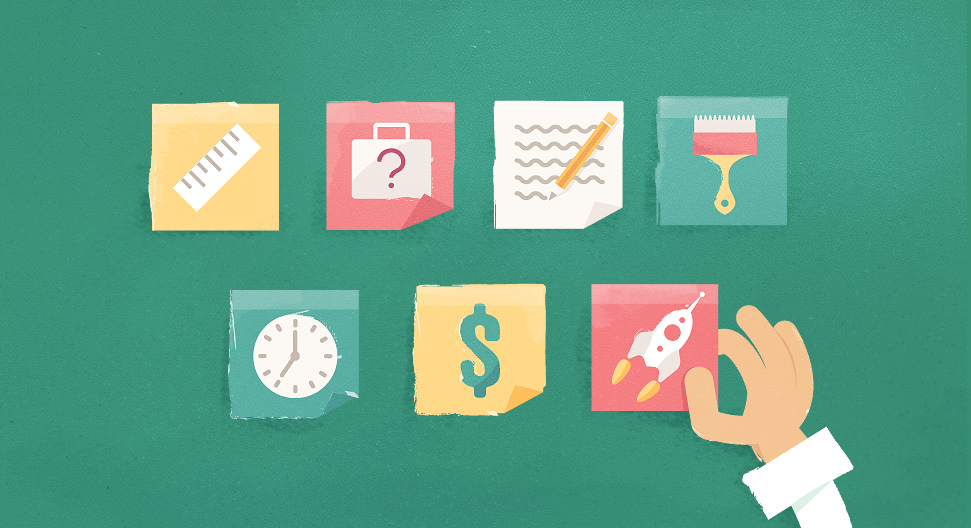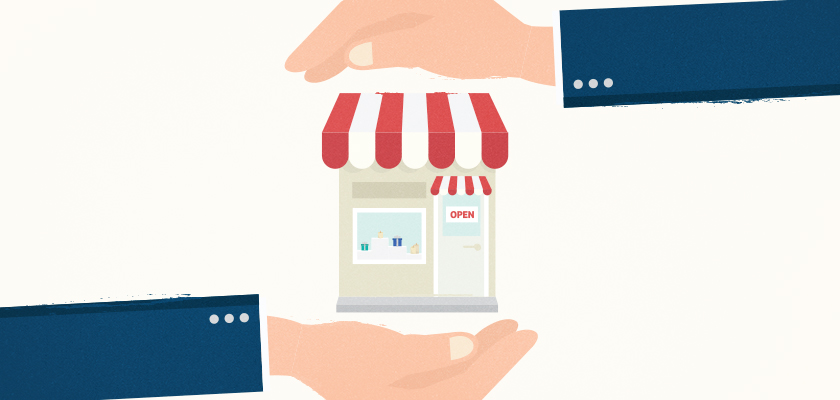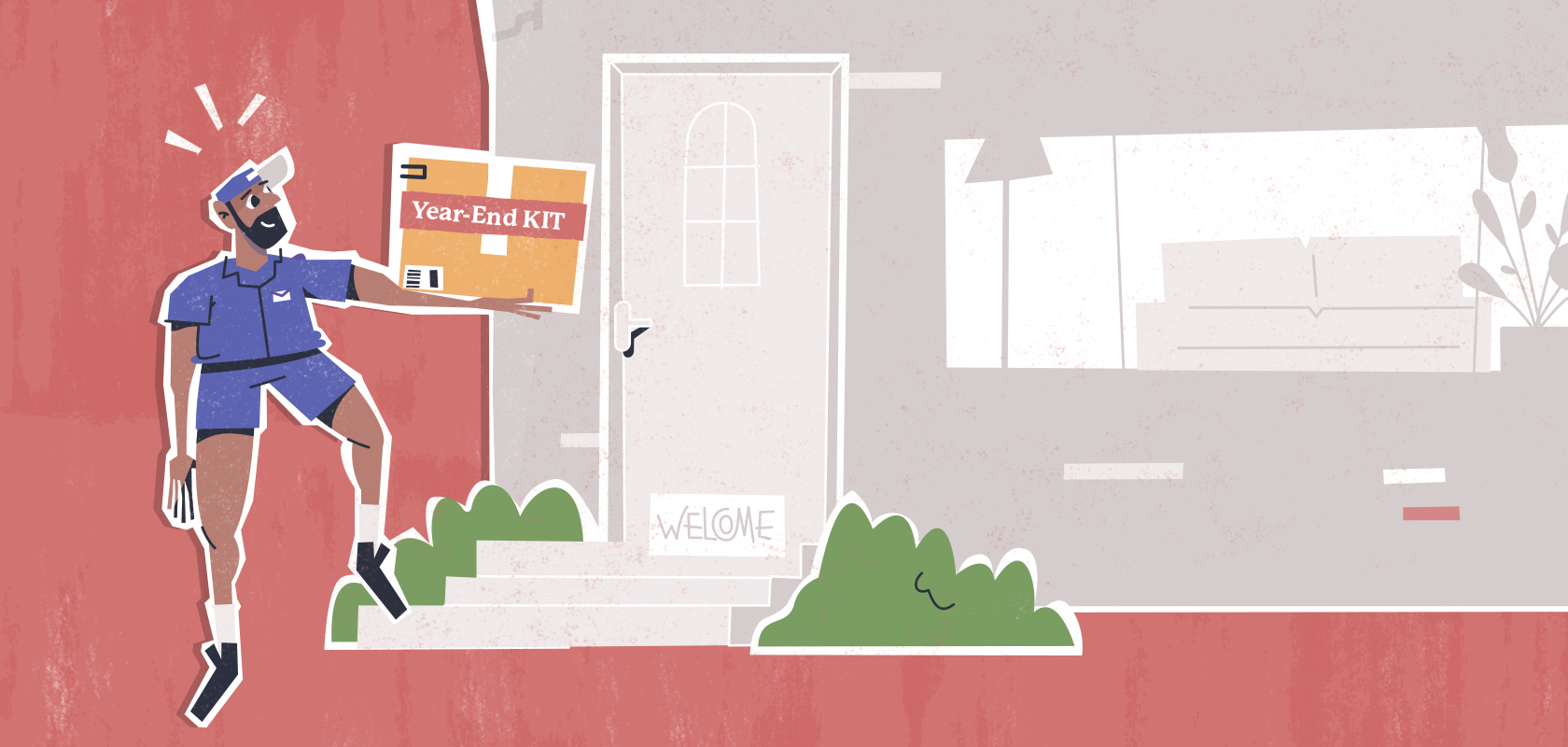Become an insider!
Get our latest payroll and small business articles sent straight to your inbox.

Your new lead has asked you for a proposal. Congratulations! But really, the work has just begun. You need to convince the prospect why your company — and only yours — is the perfect fit for their business.
I ran a web design agency for 5 years. Throughout that time, I pitched many organizations for web design work. I often wondered what the difference was between a great proposal that landed the business, and a mediocre one that blended in with the 50 others the client looked at.
After selling my agency, I started a proposal software company that helps thousands of other businesses streamline their proposal process. One of the great additional benefits is that by helping customers and looking at our data, I’ve been able to learn even more about what goes into a winning proposal.
Here’s what I’ve learned through the study of consumer psychology and the analysis of our own customer data:
1. Validate your lead
Remember that episode of Seinfeld where Elaine interviews a man she’s been dating to determine whether or not he’s “sponge-worthy”?
It’s important to take a similar approach with your new leads; just because they’re interested in working with you doesn’t mean they are sponge, I mean, proposal-worthy.
If you don’t validate leads, you’ll find yourself writing proposals for everyone and their dog, thereby winning fewer of them because the leads aren’t targeted enough.
Here are 5 things to ask yourself when speaking to a lead:
- Is this my ideal client in terms of industry, size, or revenue?
- Can I/my team really help them solve their problem?
- Am I truly excited about this project?
- Does this client have a budget I can work with?
- Is there a personality fit? We don’t have to be best friends, but if the client isn’t someone I want to have a coffee with, chances are problems will arise once we start working together.
Figure out what your deal breakers are, and then use them to determine who gets a proposal.
2. Make it about them
Speaking of personalization, always remember that nobody cares about you, they only care about themselves. It’s harsh, I know.
It’s a fact that talking about ourselves triggers the same pleasure sensation in our brains as food and sex. (Thanks, science!)
Too often, proposals are brimming with lengthy prose about the company doing the pitching instead of talking about the prospective client’s needs.
“Our Approach,” “Our Methodology,” “Our Team,” “Our Process.”
Let’s talk about them, shall we?
What are their problems?
What is their unique value proposition?
What are they trying to achieve?
What is their opportunity?
If you spend as much time demonstrating that you understand their problem and talking about how you’re going to improve their business, they’ll be more likely to read the whole thing, instead of just jumping to the price page.
3. Use plain language
In my experience, while salespeople are effective at relationship building, their writing ability often leaves something to be desired.
Too many business proposals are full of fluffy buzzwords and technical jargon meant to impress the client with, “See how much more I know than you,” instead of speaking to them on a personal level.
I’m a big fan of George Orwell’s 6 rules for writing. Keep them in mind when writing a business proposal:
- Never use a metaphor, simile, or other figures of speech that you are used to seeing in print.
- Never use a long word where a short one will do.
- If it is possible to cut a word out, always cut it out.
- Never use the passive where you can use the active.
- Never use a foreign phrase, a scientific word, or a jargon word if you can think of an everyday English equivalent.
- Break any of these rules sooner than say anything outright barbarous.
If you’re not a great writer, hire one to proofread and edit your proposals for clarity, spelling, and sentence structure. It’s worth it.
4. Design matters
You know your company’s products and services are better, but are you communicating that to your buyer? The fact is there’s a big difference between being better and appearing to be better.
You could be the best in the world at what you do, but if that quality isn’t communicated to your lead, then in their mind you’re not. Perception is reality. And perceived value, unlike actual value, is subjective.
If you talk to an Apple fanboy (I’ll admit, I’m one), they’ll struggle to tell you exactly why they are willing to pay hundreds of dollars more for an iPhone, resorting to subjective statements like, “It just feels better.”
You can make your proposals ‘just feel better’ by using good design.
- Don’t cram every page with text.
- Use whitespace and beautiful images to let the design breathe.
- Make appropriate use of color.
- Use legible and elegant typography.
If you’re seriously lacking in design skills, hire a professional to design your template and follow their guidelines, or start with a well-designed stock template and make it your own.
But please, for the love of all that is holy, don’t send a Word doc crammed with 12pt Times New Roman, and don’t try to make things stand out by making them red and underlined.
5. Narrow down your pricing options
When we looked at how many pricing fees proposals contained, we found that the average proposal contained eight fees. But out of all the winning proposals – the ones that closed – there were only two fees.
What does this tell us?
People want choice, but too much of it can cause choice paralysis and result in the buyer choosing nothing out of fear of making the wrong decision. That’s why it’s so much harder to choose what to order in a restaurant if the menu has 100 items – it all looks good, and you don’t want to waste your money on the wrong choice.
There’s a famous field test in which a Columbia professor set up a tasting booth at a local grocery store to promote and sell jam. The first week she offered 24 flavors of jam, and the following week she offered six flavors. Which week did she sell more?
With 24 flavors of jam, 60% of the store’s customers stopped to taste test and 3% of the tasters actually ended up buying jam. The following week with just six flavors available, only 40% of the store’s customers stopped to taste test, but 30% of those tasters bought jam. When you run those numbers that’s a sales increase of more than 600%!
So include a couple of pricing options in your proposal, but too much choice is just as bad as not enough.
6. Send it ASAP
It’s very common to hear companies say they need two weeks to turn around a request for a proposal.
When analyzing proposals in our app, we found that the majority of proposals were sent to a client seven days after being created.
Here’s the kicker: Proposals that were sent within four days were 11% more likely to close.
This makes sense. You need to capitalize on a person’s interest and not let it grow cold. A lot can happen in a week or two that could dampen their interest in doing business with you.
One time, I was talking to a business owner who related a story about how delivering a proposal quickly was instrumental in closing the deal:
“We knew the services that client wanted, so we stacked the proposal up. We got it in front of her within 90 minutes, and she signed it 60 minutes later. It was a situation where we needed to get it in front of her before she changed her mind. She went on vacation for two weeks the next day, so if we had waited to deliver the proposal until when she got back, she probably wouldn’t have had the same urgency to close the deal.”
7. Close the deal quickly
We found that, on average, one week passes between when a client first opens a proposal and signing off on it.
Of course, it can take much longer than that, and the more time that goes by the lower your chances are of closing the deal. It can be very frustrating to have a pile of proposals “out there” waiting on a decision for months, not knowing if they’re going to close.
Here are three ways to avoid your proposal being shipwrecked in the lagoon of forgotten proposals:
1. Follow-up
It’s a cliché, but the fortune really is in the follow-up. As soon as you send the proposal to your lead, call them and take 10 minutes to walk them through it. Give them a timeframe to make a decision (say one week) and then tell them you’ll be following up on that date. The client will be more inclined to make a decision if they know you’ll come a knocking.
2. Make it scarce
Scarcity is a technique used by marketers to capitalize on the psychology of buyers wanting what they can’t have. It’s why you get deals in your inbox with headlines like “50% off for today only”, or “There are only two copies left. Act now.”
A sense of urgency motivates your lead to make a decision.
In a polite way, make it clear that you’re in high demand and can only take on so many clients. There’s an opening in your schedule to take on this work, and that time slot will not be open forever. If the client doesn’t make a decision by a certain date, the proposal is null and void, and you may not be able to take them on as clients until another slot opens up.
3. Make it easy to say yes
All marketers know that CTAs, or calls-to-action, are necessary – otherwise how does the buyer know what to do next?
Proposals are much more effective when there’s a clear CTA at the end showing the buyer how to say yes.
People used to have to email, print and then fax back signatures, which we all know is a massive pain in the behind and just another reason for your lead to hold off on formally accepting it.
In our research, online signatures close deals 60% faster, so research tools that will enable you to get proposals signed electronically.
Programs like DocuSign allow you to acquire a signature online. All your potential customers need is a WiFi connection.
Conclusion
Proposals are just one step in the sales process, but an important one, and often the last step towards closing the deal. I hope these research-backed tips help you improve your win-rate.
Here’s what we’ve covered:
- Validate your lead
- Make it about them
- Use plain language
- Design matters
- Narrow down your pricing options
- Send it ASAP
- Close the deal quickly
If you want to see more of the proposal stats we pulled together, we published a guide you can download for free.










